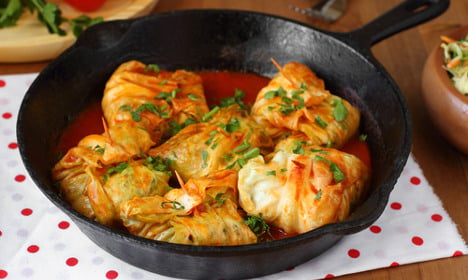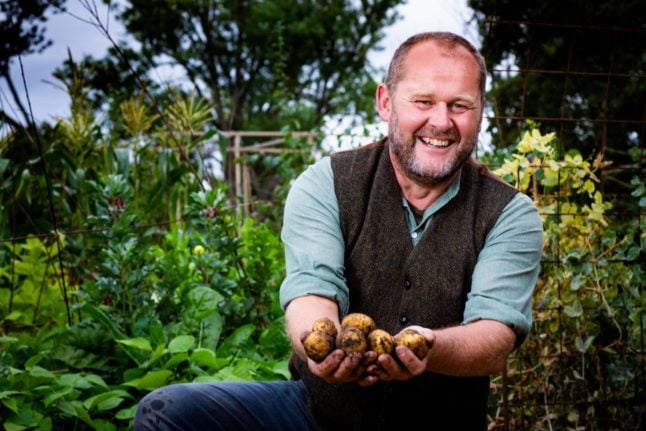Summary
Serves: 4
Preparation time: 20 min
Cooking time: 40 min
Total: 60 min
Ingredients
75g (3 oz) long grain rice
240ml (1 cup) milk
2 Savoy cabbages, about 500 g (1lb) each
4 tbsp butter
1 large onion, finely chopped
150g (6 oz) pork mince
150g (6 oz) beef mince
1/2 tsp chopped fresh thyme
1 egg, lightly beaten
salt and fresh ground black pepper
3 tbsp golden (light) syrup

Delicious cabbage rolls. Photo: John Duxbury
Method
1. Put the rice in a saucepan and add the milk. Bring to the boil and cook until tender (see instructions on the packet for exact timings). Drain, fluff up with a fork and leave to cool.
2. Separate the cabbage into leaves and remove the hard stalks. Select 20 nice large leaves.
3. Blanch the leaves, a few at a time, for about one minute, in lightly salted boiling water. Drain well.
4. Fry the onion in 1 tbsp of butter until softened.
5. Put the rice, fried onion, pork mince, beef mince, thyme, beaten egg and seasoning in a large bowl. Mix to form a loose stuffing.
6. Preheat the oven to 200°C (400°F, gas 6, fan 170°C).
7. Put 2 tbsp of the mixture into each leaf and wrap into parcels. Place in an ovenproof dish with the joins on the undersides. Drizzle over the syrup and dot with the remaining butter.
8. Bake for about 40 minutes until coloured to your liking. I tend to like them well baked, as shown above, so I sometimes turn up the heat for the last 5 minutes or so. It's a bit like with toast: my wife likes her toast light brown, but I prefer my toast to be a nice dark brown, nearly burnt. Your call.
9. Serve with boiled new potatoes, lingonberry conserve and a jug of brown sauce/gravy.
Tips
Kåldomar freeze well so make extra for a rainy day! For vegetarians, replace the meat with fried onions, mushrooms and some grated cheddar cheese or regional Västerbottensost.
Recipe courtesy of John Duxbury, Editor and Founder of Swedish Food




 Please whitelist us to continue reading.
Please whitelist us to continue reading.
Member comments